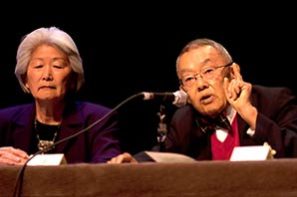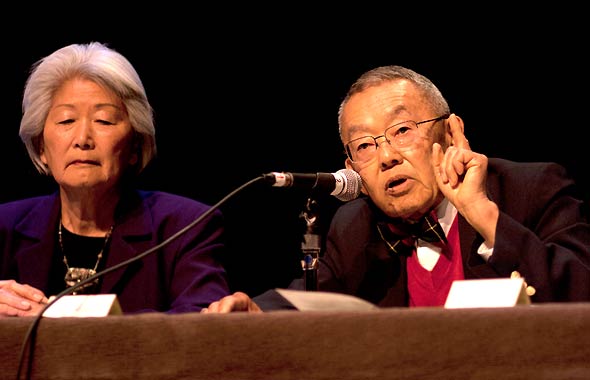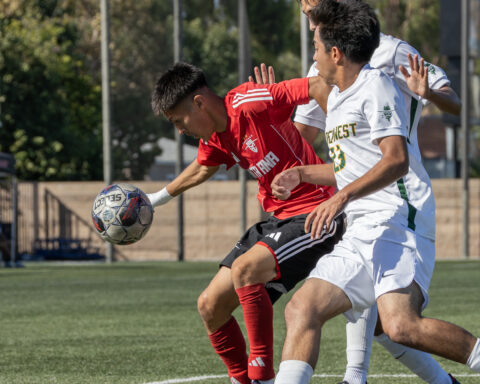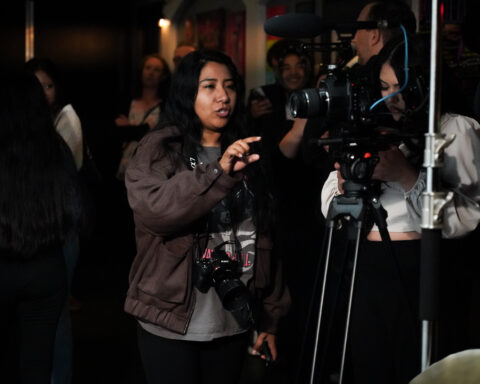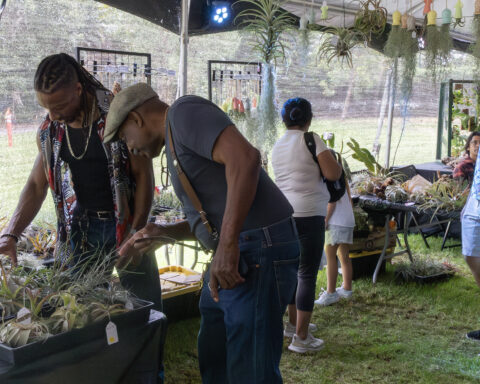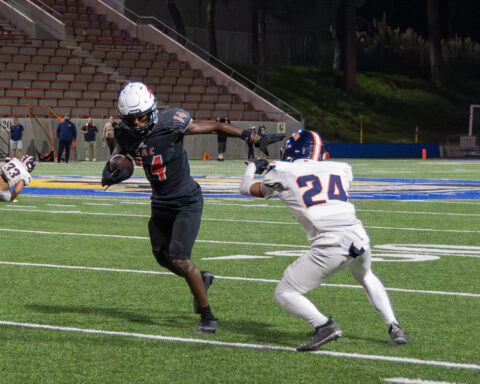Questions about, history, identity, “How did this happen?” and “Could this happen again?” were looming in the air for the students, staff and community members who strolled into Phillips Hall April 12.
Four American WWII internees intrigued a packed audience with their panel discussion: Lives Before, During and After E.O. 9066.
Sharing oral testimonies, panelists Sumika Ida Fujimoto, Dr. Donald Teruo Hata, Hatsuko Mary Higuchi and Carol Tomiko Miura said that they only know their American life.
Even though they were born here and are American enough to be president, war disrupted their national identity.
Presidential Executive Order 9066 mandated that Americans of Japanese ancestry during WWII be forced into concentration camps, many of whom were accused of being spies for Japan. Over 100,000 Japanese-Americans were interned.
Fujimoto, 95, spoke of her father entering through Ellis Island in search of the dream that is America. With a peaceful tone of voice, she spoke of having been interned during her mid-twenties.
“It was a dusty, dirty place,” Fujimoto recalled.
She taught typing courses during her internment, using cardboard in place of a typewriter. Despite the lack of supplies, she said she was proud of her success as an instructor.
Hata is a fourth generation American who was three years old when he was first interned. He noted that his recollections are limited, but he became aware of the injustice toward the internees as he matured. Especially when his mother died prematurely at 37 of what he described as “physical and emotional exhaustion.”
Born in Los Angeles, Higuchi said, “Executive Order 9066 destroyed my family life as we knew it.” She recalls a desolate desert, barbed wire, guards with machine guns and temperatures around 120 degrees. A prolific painter, “I paint to educate and to tell the story,” she said.
Miura, a retired SAC art professor, spoke with quiet acceptance. She shared that she looks at camp “as an adventure.”
“It was just the way we grew up,” Miura said.
Seeing parallels between the targeting of her ethnic group and the recent rhetoric in post-9/11 USA related to the middle east she added, “This could happen today.”
There was frequent mention by the panelists of “shoganai,” a coping mechanism in the Japanese culture with layers of meaning including “It could not be helped,” “Nothing can be done,” and “There’s no point looking back.”
Yet in the future, Fujimoto said, “There shouldn’t be any more injustice.”
RELATED STORY: Book of the year: Hotel on the Corner of Bitter and Sweet
- In Photos: Fiestas Patrias 2025 - September 25, 2025
- The two-party system is failing us. - October 19, 2024
- Read our Fall 2023 Print: Vol. 100 No. 1 - October 23, 2023


